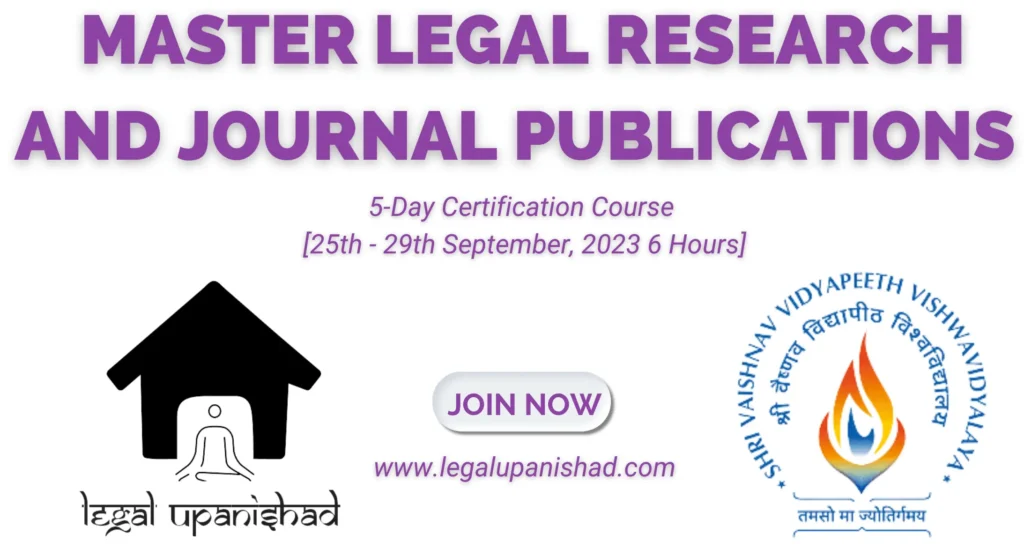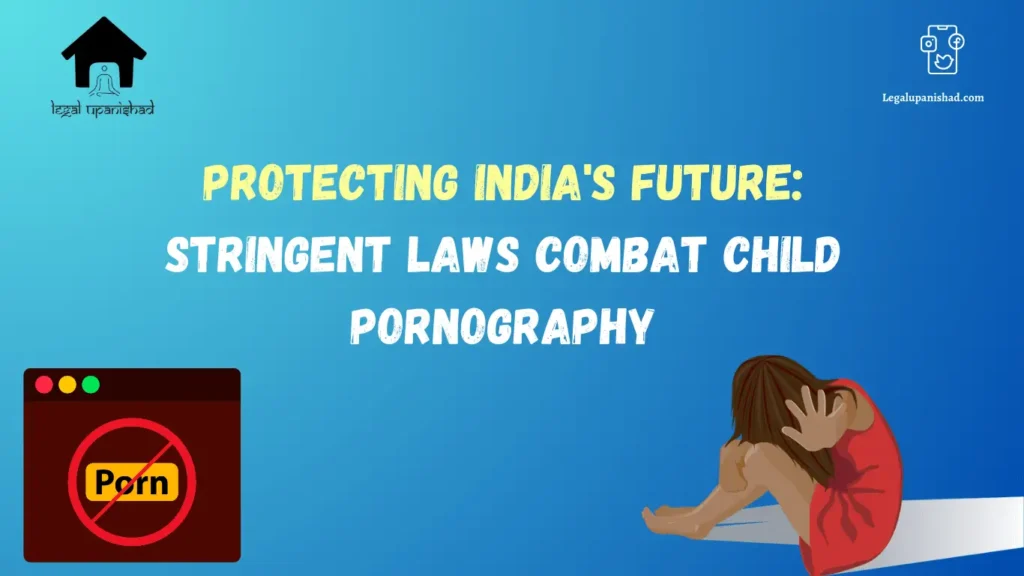This article on ‘Laws against Child Pornography in India‘ was written by Anukriti Prakash, an intern at Legal Upanishad.
INTRODUCTION
The terms ‘child’ and ‘sexual activity’ seem so evil together, and then showing it to those who are viewing it to excite their sexual needs simply adds to the horror. As a result, such actions encourage child exploitation, trafficking, and violence. This is why child pornography is regarded as so horrifying. Most people in today’s generation are harassing and filming pornographic videos utilising innocent children. The article attempts to analyse the laws restraining child pornography in India along with challenges faced in the enforcement of these laws.
CHILD PORNOGRAPHY: MEANING AND CONCEPT
The term ‘child pornography’ is defined in India under the Protection of Children from Sexual Offences Act, 2012 (POCSO). Child pornography is defined as any visual representation of overt sexual conduct that engages minors under section 2(da) of the POCSO Act. Such content might be an image, a video, or any computer-generated image that cannot be distinguished from a real child. It includes any image that depicts a child participating in such activities, whether generated, adapted, or modified.


In India, child pornography is seen as a severe crime, and the country has passed legislation to address this horrific crime and safeguard kids from abuse.
A few characteristics of India’s legislation against child pornography:
- According to the Information and Technology Act of 2000, it is illegal to create, publish, transmit, or possess child pornography in any type, including electronic or digital material.
- Offenders found guilty of creating, distributing, or possessing child pornography can face severe punishments. The minimum punishment is five years imprisonment.
LEGAL FRAMEWORK IN INDIA
Several laws and provisions in India address child pornography and aim to protect children from sexual exploitation. Here are some of the key laws and provisions:
- Indian Penal Code (IPC): Section 292, which deals with obscene materials, and Section 293, which deals with the distribution and sale of obscene materials involving children, are two provisions of the IPC that are relevant to child pornography.
- The Protection of Children from Sexual Offenses Act of 2012: The POCSO Act is the fundamental piece of legislation governing sexual assaults on minors. It defines child pornography and punishes anyone who creates, publishes, transmits, or possesses sexual content involving minors.
- The Information Technology (IT) Act of 2000 combats cybercrime, especially the internet distribution of child pornography. The IT Act’s Section 67B explicitly covers the publication or transfer of sexually explicit content concerning children and imposes severe penalties.
- State Commissions and the National Commission for the Protection of Child Rights (NCPCR): These statutory organizations are in charge of protecting and promoting children’s rights, as well as dealing with situations of child abuse and exploitation.
- Juvenile Justice (Care and Protection of Children) Act, 2015: It includes provisions for rehabilitation as well as reintegration of child sexual abuse victims.
The Protection of Children from Sexual Offences (POCSO) Act
- Definition: The POCSO Act, 2012, safeguards children from sexual offenses, defining child pornography and explicitly prohibiting its creation, distribution, or possession. It aims to protect minors from sexual exploitation and abuse.
- Penalties: Offenders found guilty under POCSO face stringent punishments, including a minimum of five years of rigorous imprisonment, extendable to life imprisonment for aggravated offenses. Fines may also be imposed.
- Child-Friendly Approach: The Act emphasizes child-friendly procedures during investigation, trial, and counselling to ensure the victim’s well-being. It promotes a safe environment for children to report offenses and seek justice.
- Reporting Obligation: The POCSO Act imposes a legal duty on individuals, including parents, teachers, and healthcare providers, to report any information about child sexual abuse or child pornography to the authorities, ensuring timely intervention and protection of children.


CHALLENGES IN ENFORCING CHILD PORNOGRAPHY LAWS IN INDIA
- Lack of Awareness: Many people, including parents, caregivers, and even law enforcement personnel, may lack awareness about child pornography and its implications. This hampers timely reporting and proper handling of cases.
- Digital Complexity: With the growth of the internet and digital technology, offenders may now make, transmit, and distribute child pornography anonymously. For law enforcement authorities, tracking and identifying culprits in the virtual sphere may be a difficult undertaking.
- Delayed Justice: Overburdened courts and lengthy legal procedures can lead to delayed justice for child pornography victims, causing frustration and discouraging others from reporting similar incidents.
- Online Platforms and Encryption: The proliferation of encrypted platforms and dark web networks makes it harder for law enforcement to detect and track child pornography activities.
- Coordination Among Agencies: Effective enforcement requires collaboration between law enforcement, child protection agencies, and other stakeholders. Lack of coordination can lead to inefficiencies in handling cases and providing support to victims.
SUGGESTIONS
- Strengthen Law Enforcement: Using specialist cybercrime units, increase training and resources for law enforcement authorities to efficiently investigate and prosecute child pornography cases.
- Awareness Campaigns: Conduct extensive awareness efforts to inform the public, parents, and kids about the risks associated with child pornography and the necessity of reporting such events right away.
- Fast-track Courts: Establish dedicated fast-track courts to expedite child pornography cases, ensuring swift justice for victims and discouraging offenders through timely convictions.
CONCLUSION
The safety and well-being of children in India are seriously threatened by the heinous crime of child pornography. A big step in protecting children from exploitation was the passing of the Protection of Children from Sexual Offenses (POCSO) Act. However, there are several obstacles to the enforcement of these rules, including resource limitations, digital complexity, and underreporting.
To combat this menace effectively, concerted efforts are required. Strengthening law enforcement with specialized training and resources, conducting awareness campaigns, and establishing fast-track courts are vital steps. Additionally, fostering international cooperation and enhancing technological capabilities will aid in tackling online child pornography.
In order to properly tackle this issue, parents, educators, authorities, and society must collaborate to safeguard our most innocent ones. We can make the world a safer place where each kid’s rights and dignity are maintained by standing up against child pornography, ensuring a better future for future generations.
REFERENCES
- Pooja Yadav, ‘Laws related to pornography in India’, India Times, 15 Spetember 2022, available at: https://www.indiatimes.com/explainers/news/laws-related-to-pornography-in-india-579700.html (Last visited: 03 August 2023).
- Akshita Jain, ‘Remedies against child pornography in law’, iPleaders blog, 25 April 2021, available at: https://blog.ipleaders.in/remedies-child-pornography-law/#Legislative_provisions_combating_child_pornography_in_India (Last visited: 03 August 2023).

